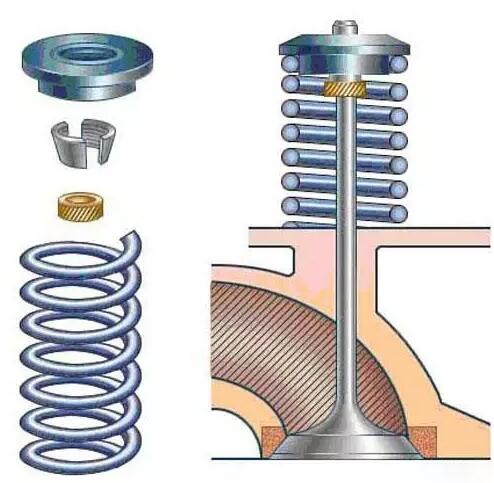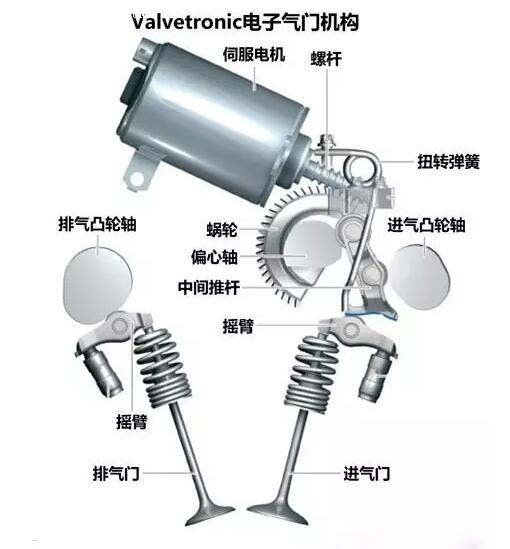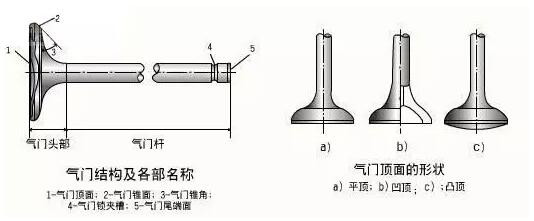Contact Number 
17749472477/ 0393-8903-977
Puyang Shengdong New Energy Co. Ltd
Address:200 meters east of the intersection of Xindong Road and Weidu Road, Hualong District, Puyang City
TEL:0393-8903-977
Email:1318264254@qq.com
Author: Release time:2021-05-28 15:44:43Click:2006
Regardless of the intake valve or exhaust valve, to ensure stable operation under harsh conditions, the valve must have sufficient strength, wear resistance and heat resistance; the valve must be light and have good heat resistance. The close contact between the valve and the valve seat ring is the valve cone, which should have higher sealing and wear resistance. Wear-resistant and heat-resistant hard alloys can be welded on the cone.



Generator set repair: engine valve
Regardless of the intake valve or exhaust valve, to ensure stable operation under harsh conditions, the valve must have sufficient strength, wear resistance and heat resistance; the valve must be light and have good heat resistance. The close contact between the valve and the valve seat ring is the valve cone, which should have higher sealing and wear resistance. Wear-resistant and heat-resistant hard alloys can be welded on the cone.
The form and cause of valve damage
The main forms of valve damage are wear, bending and skew. The reasons are:
① The valve and valve seat ring are subject to the impact of high temperature and high pressure gas and the mechanical load in the working process, and are prone to ablation and wear. The working slope of the valve and the valve seat ring, because the valve keeps opening and closing, colliding and knocking against each other, bear repeated impact load, causing the working slope to wear, grooving, spots and dents.
②The valve stem is constantly rubbing when it moves in the valve guide, and the lubrication conditions are poor. In addition, the dust and abrasive that flee in causes both of them to be worn. ...
③ Carbon deposits and glue enter the valve guide, which accelerates the wear between the valve stem and the guide.
④ The tail end of the valve rod and the rocker arm collide with each other, causing both of them to be worn.
⑤ The top of the valve is affected by the gas pressure in the cylinder, and the end of the valve rod is hit by the cam through the tappet, causing the valve rod to bend.
⑥ The valve top collides with the piston and the valve rod bends.
⑦ The gap between the rocker arms at the end of the valve stem is too small. After being heated and expanded, it will withstand the end of the valve stem to bend and make the end face uneven.
⑧ The working surface of the valve or valve seat ring is not concentric with the valve stem, and the valve seat and valve guide are not concentric, causing the valve stem to bend.
⑨After the valve stem and valve guide are worn out, the matching gap will increase. The valve stem will sway in the tube and the valve will be skewed, causing eccentric wear of the valve head.
⑩After the valve stem is bent, the skew and offset of the top of the valve are formed.
Detection method of valve stem bending deformation
1. Use a dial indicator to detect and support the valve stem on two V-shaped frames with a distance of l00mm, touch the probe of the dial indicator against the middle of the valve stem, and the other dial indicator probe against the head of the valve, rotate The straightness of the valve stem and the radial runout of the valve head can be measured after one valve cycle.
2. Use a knife-edge flat ruler and feeler gauge to detect a knife-edge flat ruler, place the rod of the tested valve on the knife-edge flat ruler, and use a feeler gauge to measure the difference between the valve rod and the knife-edge flat ruler while turning the valve slightly. The size of this gap is the straightness of the valve stem.
3. Use a flat plate to detect the valve rod on the edge of the flat plate to roll, and use a feeler gauge to measure the gap between the rod and the flat plate, which is the straightness of the valve rod.
If the valve rod is bent and deformed beyond the regulations, it should be replaced. If necessary, it can be corrected by hydraulic pressure and percussion method.
How to trim the valve stem
The valve stem is severely worn, and the valve that is dented, thinned and severely bent is generally not reused.
② The valve stem curvature exceeds 0.03mm, and the valve top skew exceeds 0.02mm, which can be corrected and trimmed with a press, and then checked again with a dial indicator until it meets the requirements.
③After the valve stem is worn, its roundness and cylindricity deviation exceeds 0.03mm, and the diameter decreases beyond the allowable size, it should be ground according to the repaired size, or the valve stem should be repaired to the standard size or by chrome plating or iron plating. Repair size. To
④The length of the valve stem must meet the standard. If the end face of the valve stem is worn, it should be ground according to the worn rod end face. The maximum wear on the rod end is generally 0.50mm in order to obtain a smooth and flat surface.
Hotline
17749472477
Working hours
Monday to Friday
Work phone
0393-8903-977

